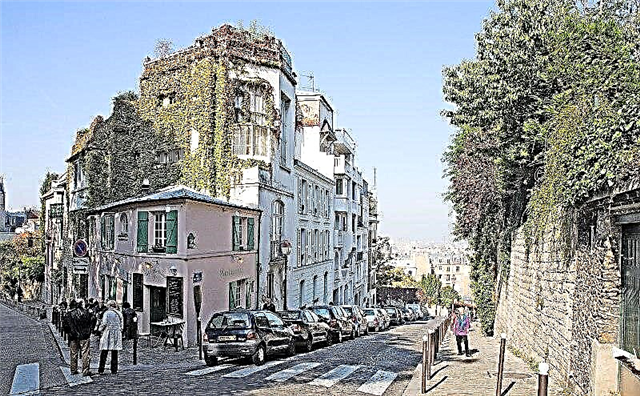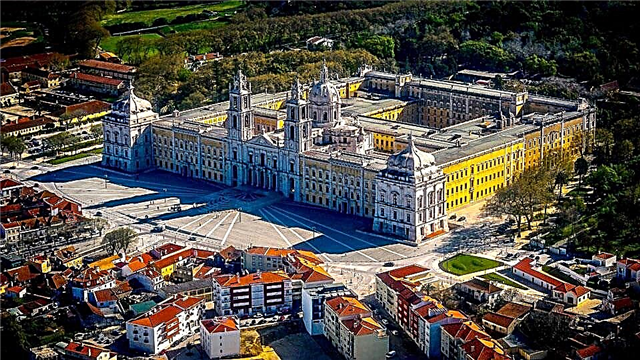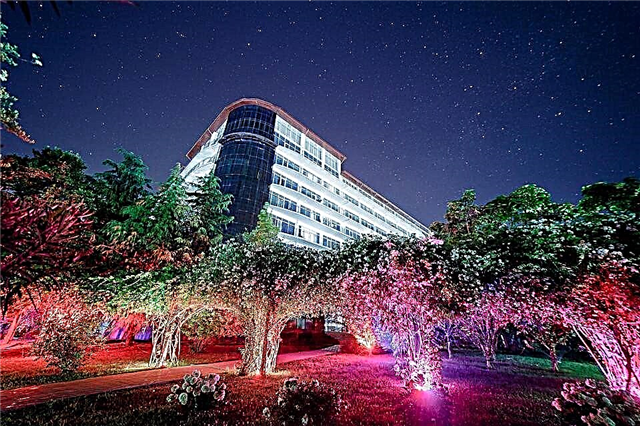Since the founding of Yaroslavl, Christian monasteries have played a very important role in it. When the city was still completely wooden, the approaches to it were guarded by the Spaso-Preobrazhensky and Petrovsky monasteries, built like real fortresses. The Yaroslavl monasteries had a different fate, but each of them has written many bright and memorable pages in the history of the city. Today, four monasteries have survived in the ancient city. Three of them are active - one for men and two for women.
Spaso-Preobrazhensky monastery

View of the Transfiguration Monastery from the Kotorosl River
At the end of the 12th century, the monastery was founded as a center of spiritual life and a fortress designed to protect Yaroslavl on the western borders. It became an important part of the ancient city's carefully planned defense system. Fortified monasteries were very important, first of all, for the Yaroslavl Kremlin. After all, he always had only wooden walls and without such fortifications became very vulnerable.
There are many glorious pages in the history of the monastery. Since the 13th century, the first religious school in the north-west of the Russian state was opened here. From the walls of this monastery in 1612, the people's militia went to Moscow under the leadership of K. Minin and D. Pozharsky. In the 18th century, one of the first theological seminaries in Russia was created in the monastery - the Latin-Slavic one. And, finally, it was here, among the old handwritten books, that the "Lay of Igor's Campaign" was discovered.
The Christian monastery has preserved to this day the oldest stone church in the city - the Transfiguration Cathedral. The majestic temple was erected at the beginning of the XIII century in honor of the formation of the Yaroslavl principality. And at the beginning of the 16th century, after a great fire, the cathedral had to be rebuilt and consecrated anew. This is one of two Russian churches in which today you can see frescoes made during the reign of the Russian Tsar Ivan IV the Terrible.
In addition to the picturesque three-domed cathedral, the Resurrection Church and the Temple of Yaroslavl Wonderworkers, cell and refectory buildings are located on the territory of the monastery. And above all, a slender belfry, built in the 16th century, rises above the monastery. There is an observation deck on it, from which the mouth of the Kotorosl River, the Volga banks and city quarters are perfectly visible.
The entire territory of the monastery is surrounded by a powerful wall, on which there are stone towers and the Holy Gates. Nowadays, there are several interesting museum exhibitions inside it. Here you can see old icons, decorative and applied products, exhibits telling about the flora and fauna of the Yaroslavl region, as well as how the "Tale of Igor's Campaign" was found.
The abode is located in the city center, not far from the Moscow bridge over the river. Kotorosl, on Epiphany Square, 25, 2.5 km from the Moscow railway station.
Tolgsky Svyato-Vvedensky monastery

View of the Tolgsky Svyato-Vvedensky Monastery from the opposite side of the Volga River
The monastery appeared on the Volga bank in the XIII century and got its name from the left tributary of the Volga. In the middle of the 16th century, John IV the Terrible came to this monastery for healing, and the monks helped him to heal. Since then, the monastery was constantly under the royal patronage. In memory of the sovereign's arrival, a Siberian cedar grove was planted on the territory of the monastery, and it has survived to this day. Now there is a small chapel in this cedar forest.
When the Time of Troubles came, the monastery was plundered by enemy troops, and 46 monks and novices who tried to hide in one of the temples were killed. In memory of them, at the end of the 19th century, a chapel was erected in the monastery.
Nowadays, in the ancient monastery there is a functioning nunnery, where 120 nuns live. For everyone who has visited here, the monastery territory evokes a feeling of admiration. The temples and buildings are well renovated and many flowers have been planted everywhere. Of the old buildings erected in the monastery in the 17th-18th centuries, the Exaltation of the Cross and the Savior Churches, as well as the Vvedensky Cathedral have survived. In addition, in the monastery you can see a very beautiful gate church of St. Nicholas, built in the second half of the 17th century.
The ancient Tolgskaya Svyato-Vvedenskaya monastery is located on the left bank of the Volga, 6 km north of the central quarters of the city.
Cyril-Athanasievsky monastery

View of the St. Cyril-Athanasievsky Monastery from Chelyuskintsev Street
The small Yaroslavl monastery has a 400-year history. It is believed to have been founded at the beginning of the 17th century. At first, all buildings here were wooden, and the first stone churches appeared only at the end of the 17th century. The monastery survived several severe fires, after which it was rebuilt again. Many monks never lived there, but the believers revered the monastery, and many pilgrims always came here to pray.
During the years of the struggle of the Soviet regime with religion, the ancient monastery experienced a long period of ruin and desolation. It was closed, two bell towers and the five-domed Ascension Church built in the 17th century were destroyed. Various industries and offices were located on the territory, and also used the premises for housing for the townspeople. By the beginning of the XXI century, the monastery was in great decline and desolation, and rubbish was lying between the old churches. Since 2008, listeners of the Theological Seminary of Yaroslavl began to live here, and the monastery began to revive step by step.
Several temples have survived in the ancient monastery. The oldest church, dedicated to the holy Archbishops of Alexandria Cyril and Athanasius, was built in the second half of the 17th century. Another temple, which is often called the Spaso-Proboinskaya Church, was erected at the end of the 17th - beginning of the 18th century.
Today the monastery has the status of an active Orthodox male monastery, and restoration work continues on its territory. Anyone can freely get here - both pilgrims and tourists interested in Russian architecture and monastic traditions. The doors of the old monastery are open to everyone. It is located in the city center, on st. Chelyuskintsev, 17.
Kazan monastery

View of the Kazan Monastery from Trefoleva Street
A female Orthodox monastery appeared in the city at the beginning of the 17th century. The Yaroslavl lands were so devastated by the Time of Troubles that there was no talk of stone construction, and the first monastery buildings were erected only from wood. The very first brick church appeared here only in 1649. And they consecrated it in honor of the revered icon of the Kazan Mother of God, which, according to the Yaroslavl people, helped the city to withstand the Polish-Lithuanian troops.
The Kazan Monastery enjoyed patronage in Moscow and among wealthy Yaroslavl families, so there was always enough money to carry out repairs, buy utensils for church services and vestments for priests. In the 70s of the 18th century, a large stone construction began on the territory with funds allocated by Catherine II. For several decades, all the old wooden buildings were replaced with stone ones, and new churches and buildings for nuns were erected.
The nuns who lived here not only prayed, they opened an icon-painting workshop in the monastery and worked like gold seamstresses. The quality of their products was so high that the works of the nuns were exhibited at the World Exhibition and received honorary awards there.
After 1917, difficult tests awaited the monastery. It was closed, and for several years the territory was used as a concentration camp, where everyone who did not agree with the new political realities was kept. Later, the monastery housed barracks, offices, warehouses and even a planetarium. The transfer of churches to believers began in 1997.
Today, there is an Orthodox women's monastery on the restored territory. Here you can see three temples built in the 19th century.These are the massive Kazan Cathedral, erected in the traditions of late classicism, the warm Church of the Intercession of the Virgin and the Sretensky Church, which the abbess of the monastery used to use as a house church. The ancient monastery in Yaroslavl became the center of spiritual education. It has an Orthodox gymnasium and a regency school.
The abode is located in the historical center of the city, between Pervomayskaya and Trefoleva streets.











